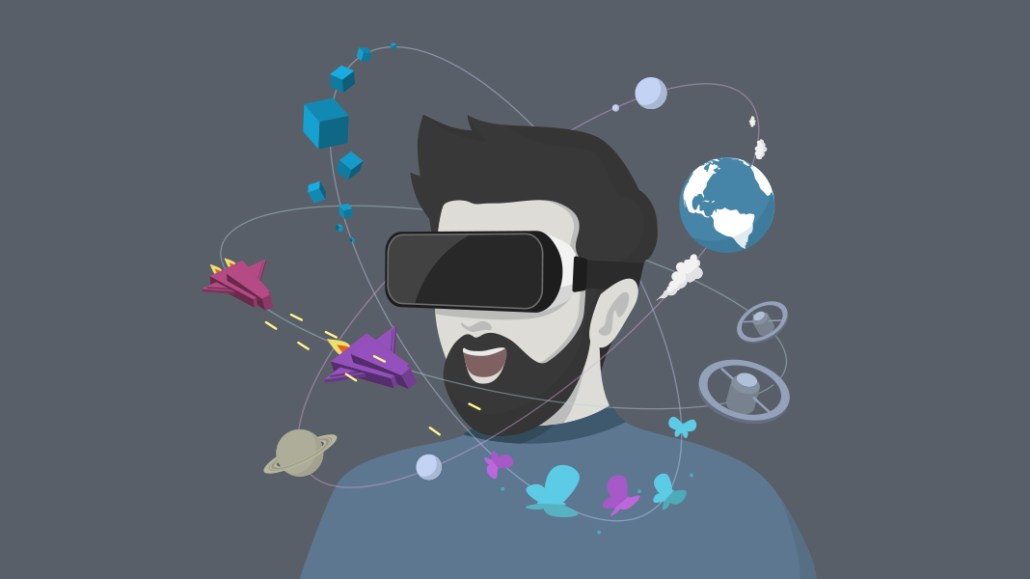Save 50% on a 3-month Digiday+ membership. Ends Dec 5.
‘A different model’: Why the BBC centralized its VR team

The BBC is one publisher still fully committed to experimenting with virtual reality.
Last November, the BBC formed a centralized team of between five and 10 VR producers who work with other departments — like news, factual, history or arts and culture — on VR projects. Before then most of the work around VR and 360-degree video was contained to the BBC’s research and development lab and released through Taster, where the R&D unit showcases its work.
The BBC is preparing to release a two-part documentary called “Damming the Nile” with the BBC’s Africa correspondent Alastair Leithead, documenting the water politics along the river. The news team of four people spent two and half weeks filming the content last December. The BBC is also releasing VR work in the coming weeks celebrating women’s suffrage in the U.K.
“[The VR hub] is a different model from how things have worked at BBC,” said Zillah Watson, head of VR at BBC. “We’re understanding that you can’t separate editorial and creative from the technology in order to work out to use a new medium to tell stories. It’s a multidisciplinary team — all people bridge both worlds — where previously tech and creative were separate.”
Two years into the BBC’s VR journey, the corporation conducted qualitative research into how audiences respond to VR. “We are very clear: If it’s good quality and offers something through the headset that’s better than on TV, then it’s worth continuing to explore,” said Watson.
The research underlined VR’s existing challenges like content discovery, the fact that few people own a device, and poor content. Forecasts by PwC from last June predict that there will be 16 million headsets in the U.K. by 2021, around 12 million of these will be portable mobile VR devices that use a smartphone, like a Samsung Gear VR or Google Cardboard.
According to Chris Stack, creative director at agency Ralph, which has created VR experiences for Sony, the average cost for a brand VR experience is between £500,000 ($700,000) and £750,000 ($1 million). By now, publishers have figured out what VR is not good for, to justify the money and effort spent on VR content it needs to offer a richer experience than conventional TV.
Ad position: web_incontent_pos1
“The success metrics are not about audience reach because it’s still constrained by a distribution issue,” said James Montgomery, director of digital and technology, “but the BBC wants to keep pace with the changing video technologies and understand where they might be heading. It’s about developing the capabilities to evolve it into something long term. We’re spending time learning about it, then hopefully influence the evolution of the platforms.”
Tech companies like Google and Samsung are funding media companies like the Guardian and the New York Times to make VR content — Montgomery said that the BBC is in conversations with tech companies — but subsidies have a shelf life. The commercial arm of the BBC, BBC Worldwide, is funded by advertising rather than the license-fee payer, and can see the opportunity to work with brands to co-fund VR content, but the potential audience is still too small to cross the threshold.
The same PwC forecast predicts the U.K.’s virtual reality industry will grow by 76 percent by reaching £801 million ($1.1 billion) in 2021, making it the fastest-growing and largest virtual reality industry in Europe, Middle East and Africa.
While VR camera and recording equipment is improving rapidly, post-production is still arduous, publishers have to work with hefty file sizes and software that’s not powerful enough to render it. Having a clear idea of what you want the finished product to look like is key. “We’re so used to video editing being so fast and easy to learn,” said Watson. “Now everything takes longer, and we have to relearn skills. We’re back in the days of its being cumbersome and constraining.”
More in Media

What publishers are wishing for this holiday season: End AI scraping and determine AI-powered audience value
Publishers want a fair, structured, regulated AI environment and they also want to define what the next decade of audience metrics looks like.

Digiday+ Research Subscription Index 2025: Subscription strategies from Bloomberg, The New York Times, Vox and others
Digiday’s third annual Subscription Index examines and measures publishers’ subscription strategies to identify common approaches and key tactics among Bloomberg, The New York Times, Vox and others.

From lawsuits to lobbying: How publishers are fighting AI
We may be closing out 2025, but publishers aren’t retreating from the battle of AI search — some are escalating it, and they expect the fight to stretch deep into 2026.
Ad position: web_bfu



